Imagine stepping out into your backyard and spotting a wild leopard lurking in the shadows, or hearing the distant rumble of a tiger’s roar outside the city limits. It’s thrilling—and a little terrifying! While most people picture big cats prowling deep inside protected reserves, the truth is, many magnificent felines wander far beyond park boundaries. That’s where things get tricky. From unexpected run-ins with humans to the dangers of highways and poachers, life outside the lines is full of surprises. Let’s jump into the untamed lives of eight big cats who dare to venture where few expect them—and discover why their wild ways can sometimes spell trouble.
Leopards Love the Edge of Town

Leopards are true urban explorers. Unlike their bigger, fussier cousins, these spotted stealth-masters often slip right up to the edges of villages, farms, and even bustling cities. Their daring has a downside: leopards hunting livestock can spark conflicts with humans who fear for their animals and safety. Amazingly adaptable, leopards will eat almost anything, from goats to stray dogs to rats, so they find plenty of snacks outside protected parks. But this “eat anything” attitude can land them in hot water—villagers sometimes retaliate to protect their livelihoods. With their ability to climb walls and dodge cars, leopards are the ultimate survivors, but the risks they take are as high as their tree-top naps.
Jaguars on Cattle Ranches

Jaguars, the mysterious giants of the Americas, are often caught wandering far from the Amazon’s leafy embrace. Ranchlands in Brazil, Mexico, and Argentina are like open buffets for these powerfully built cats. While jaguars keep rodent and pest numbers down, their taste for cattle means ranchers aren’t always happy to see them. This tension sometimes leads to dangerous “cat and human” stand-offs. Unlike lions or tigers, jaguars are masters of the sneak attack, able to slink through fences and disappear into thick brush in seconds. Their presence is a reminder that wildness doesn’t always respect borders—and that the biggest cats can stir up the biggest debates.
Tigers on the Move in Farmlands
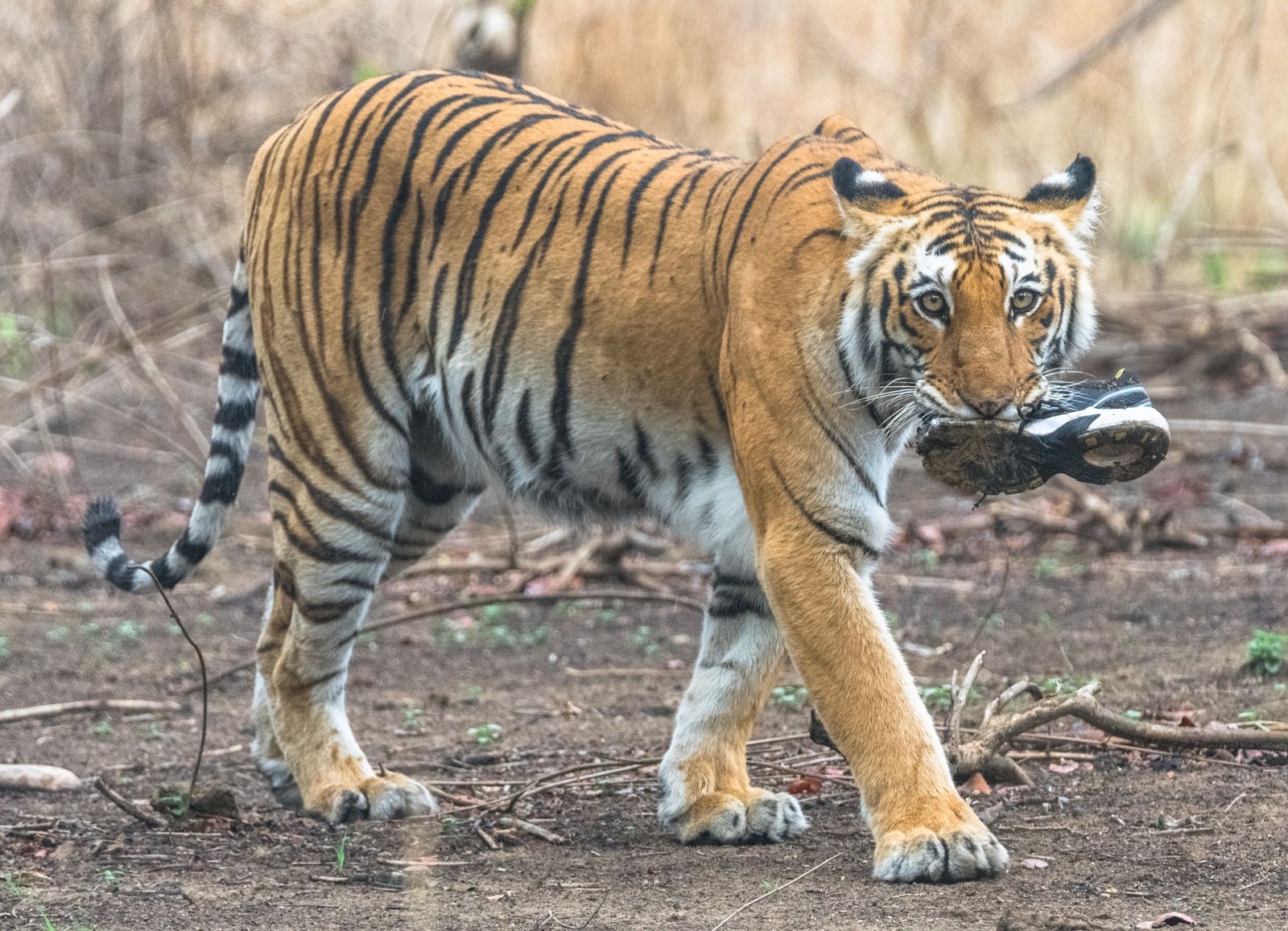
Tigers are the ultimate wanderers. As forests shrink or get chopped up by roads and farms, these striped nomads often step right into human territory. It’s a risky move. A hungry tiger might stalk livestock, and a face-to-face encounter can send shivers down anyone’s spine. Sometimes, these roaming tigers even wander into towns, turning a quiet evening into headline news. Tigers are surprisingly shy—most want nothing to do with people—but if they feel cornered, things can turn dramatic fast. Their bold journeys outside parks show just how much these cats need room to roam, but also how close they’re coming to our doorsteps.
Mountain Lions in Suburbia

Picture a mountain lion leaping a backyard fence in California or Utah. It’s not as rare as you’d think! These powerful cats—also called cougars or pumas—have learned to live in landscapes dotted with houses, highways, and shopping centers. They’re so good at hiding, most people never know a big cat is nearby. But when a mountain lion grabs a pet or is caught on a security camera, the news spreads fast. The risks are real for both sides: cars, poisons, and fear of humans threaten the cats, while people worry about their kids and pets. It’s a modern wilderness drama—right in your neighborhood.
Lions Roaming Community Lands
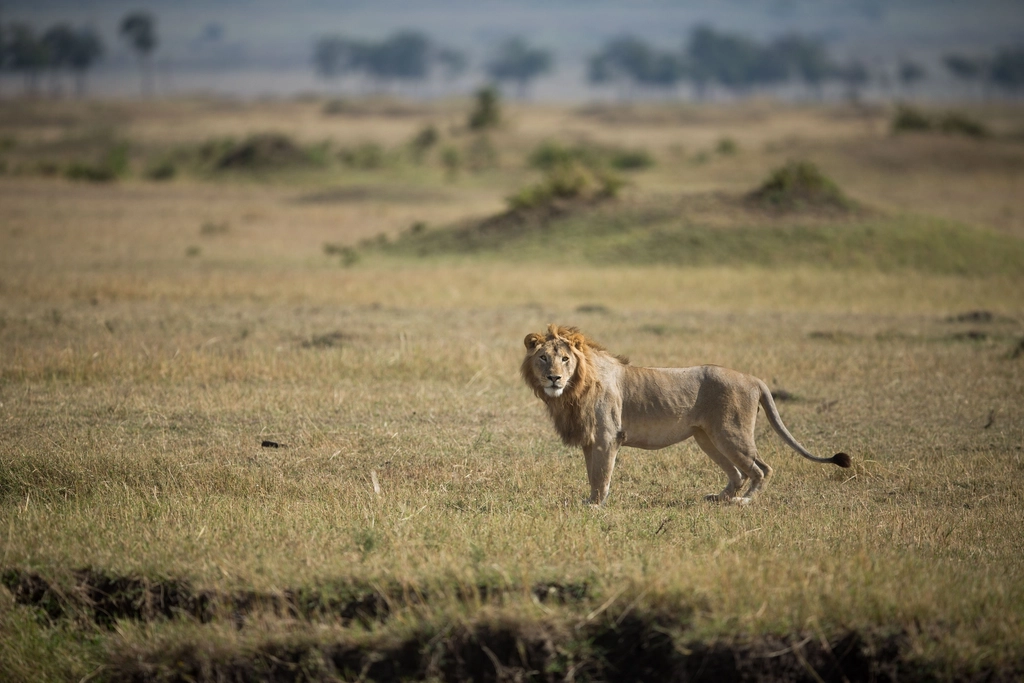
Lions aren’t just the kings of the savannah—they’re often the uninvited guests of nearby ranches and villages. In places like Kenya and Tanzania, lions may follow migrating herds right past park fences and into grazing lands. When lions hunt cattle, herders sometimes fight back, and the results can be tragic for both. Some communities are now building “boma” fences or using flashing lights to keep lions at bay, but the cats are clever. Every lion that leaves the park faces a gauntlet of challenges, from angry farmers to busy roads, but their boldness is a testament to nature’s determination.
Cheetahs Sprinting Through Farmlands

Cheetahs, the world’s fastest land animals, aren’t always racing across open plains. In Namibia and other parts of Africa, they often slip through fences onto farmland, where the easy prey of sheep and goats can be irresistible. While cheetahs are less likely to attack people, farmers sometimes see them as pests. These sleek cats are shy and avoid trouble, but their need for space (lots of it!) means they often go beyond park boundaries. Ironically, cheetahs can be caught on camera dashing past tractors or lounging in cornfields—an unexpected sight that proves wildness is never far away.
Snow Leopards at the Edge of Villages

Snow leopards, those “ghosts of the mountains,” are famous for their stealth. But as climate change and grazing shrink their icy domains, these elusive cats are creeping closer to human settlements in Central Asia. They sometimes make daring raids on livestock, risking retaliation from herders who depend on their flocks. With their thick, fluffy tails and pale coats, snow leopards are masters of camouflage—even at the edge of a village. Spotting one is like seeing a myth come alive, but their presence outside reserves is a silent cry for more space and understanding.
Clouded Leopards in Farmlands

Clouded leopards are rarely seen, but they’re full of surprises. Living in the forests of Southeast Asia, these nimble climbers sometimes venture into orchards, plantations, and even chicken coops. Unlike big, bold tigers, clouded leopards are shy and secretive, preferring to avoid people—but shrinking forests push them closer to farms. Their unique, cloud-shaped spots and long tails help them blend in, but they’re not immune to traps or angry farmers. Every clouded leopard that leaves the shadows faces a world of new risks, but also chances to amaze anyone lucky enough to spot them.
Lynx on the Edges of Towns
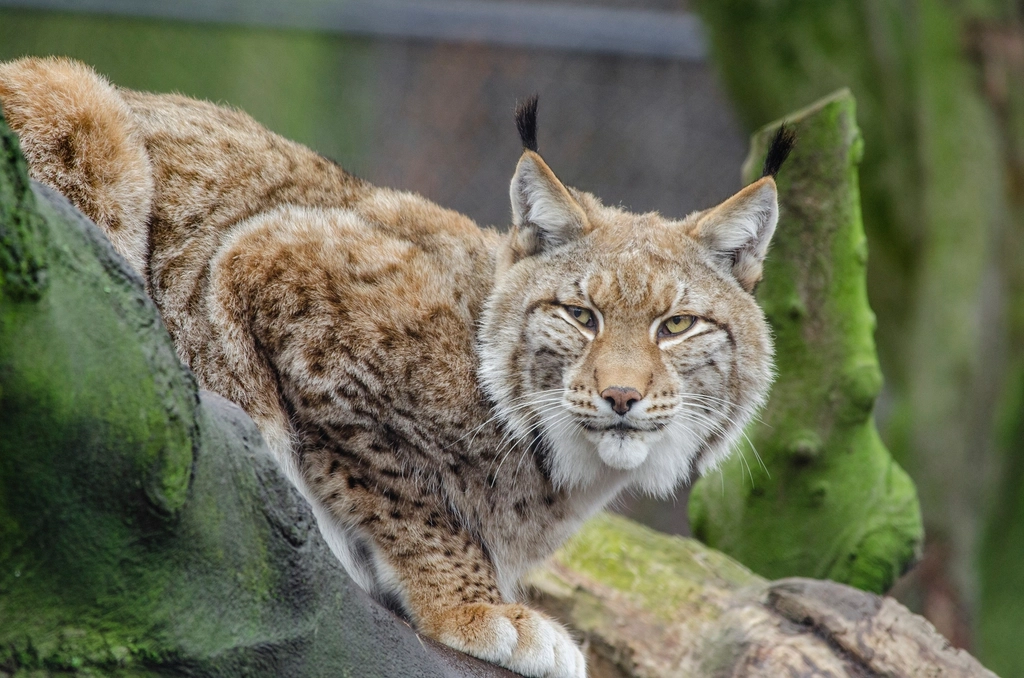
The lynx, with its tufted ears and piercing stare, is a master of living on the fringes. In Europe and North America, these medium-sized cats often roam forest patches near towns and villages. They hunt rabbits and deer, but sometimes take chickens or sheep, causing conflict with local farmers. Lynx are shy and mostly nocturnal, so they’re rarely seen—making a sighting feel like spotting a secret agent in your backyard. While they avoid people, their overlap with humans is growing as wild spaces shrink. The lynx’s quiet resilience is both inspiring and a reminder of how tangled our worlds have become.
Caracals Crossing Highways

Caracals are the acrobats of the cat world, known for their incredible leaps and large, pointed ears. These slender hunters are often found near towns and agricultural fields in Africa, the Middle East, and India. They feed on rodents and birds, but as their habitats get sliced up by roads and cities, caracals are forced to cross dangerous highways in search of food or mates. Many don’t survive the journey. Their story is a dramatic example of how human development can turn daily life into a high-stakes obstacle course for wildlife.
Servals in Rice Fields
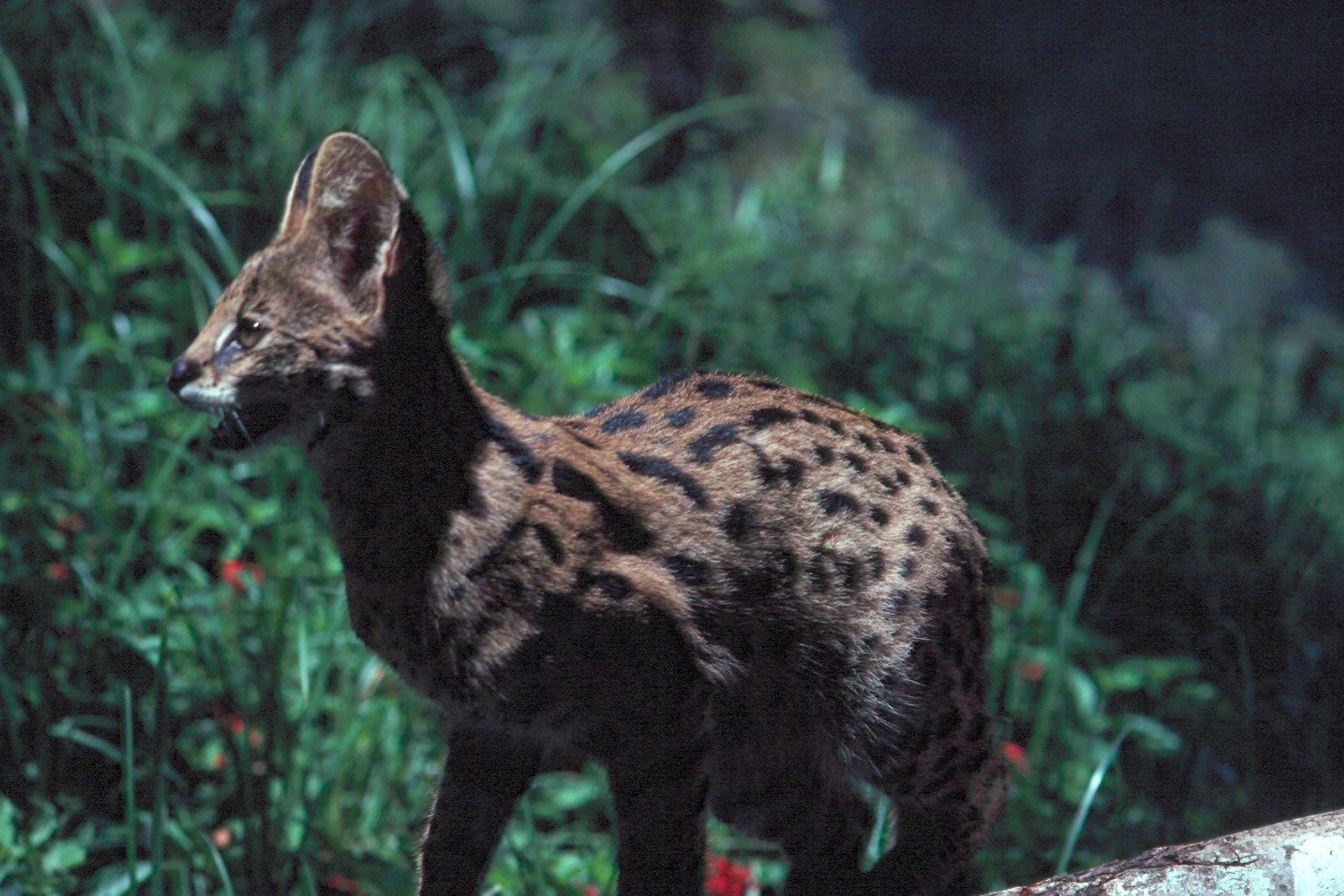
Servals, with their long legs and oversized ears, look like something out of a wild imagination. These African cats love wetlands, but as rice paddies and irrigation canals spread, servals now hunt frogs and rodents in fields right next to villages. They help control pests, but sometimes get caught in snares meant for other animals. Servals are shy and avoid conflict, but their curiosity can lead them into risky places—even into people’s gardens late at night. Their adaptability is impressive, but life on the edge is always uncertain.
Ocelots in Sugarcane Fields
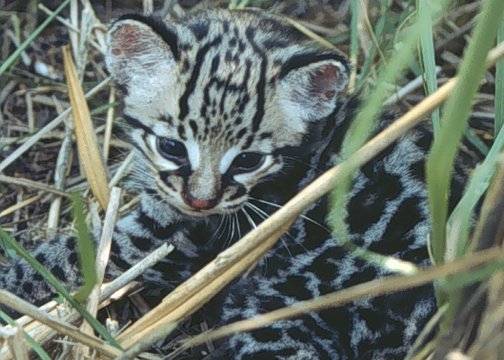
Ocelots, the spotted beauties of the Americas, are surprisingly comfortable sneaking through sugarcane and coffee plantations. These small cats keep rodent populations in check, but the noise of tractors and crowds can disrupt their secretive lives. Sometimes they get caught in traps or hit by vehicles as they move between patches of forest. Ocelots blend in almost anywhere, but the loss of wild corridors means every trip outside a reserve is a leap into the unknown.
Fishing Cats in Fish Farms

Fishing cats are true specialists, with webbed paws perfect for hunting in marshes and rivers. But as wetlands get drained for development or fish farms pop up, these cats often sneak into shrimp ponds and fish tanks for a midnight snack. Fishermen see them as competitors and may set traps to protect their stock. Fishing cats are rarely seen, but their presence near towns and farms is a sign that even the most specialized wild cats struggle to find safe spaces.
Pallas’s Cats Near Herdsmen Camps

Pallas’s cats, with their fluffy round faces and grumpy expressions, live in the cold grasslands of Central Asia. As their habitats are grazed by livestock, these cats sometimes venture close to herders’ camps in search of rodents. But life near people is a mixed blessing—food is plentiful, but so are dangers from dogs and traps. Seeing a Pallas’s cat is like finding a living plush toy, but their survival outside parks depends on the tolerance of their human neighbors.
Bobcats in Backyards

Bobcats, with their stubby tails and spotted coats, are regular visitors to North American suburbs. They’re experts at sneaking through fences and hiding under decks, hunting rabbits and squirrels without most people noticing. Sometimes, though, a bobcat will snatch a chicken or get caught on a security camera, sparking local headlines. Bobcats are shy and rarely confront people, but their growing presence in neighborhoods is a sign that these wild cats are adapting fast—even if it means a risky life in the human world.
Jungle Cats in Irrigated Fields
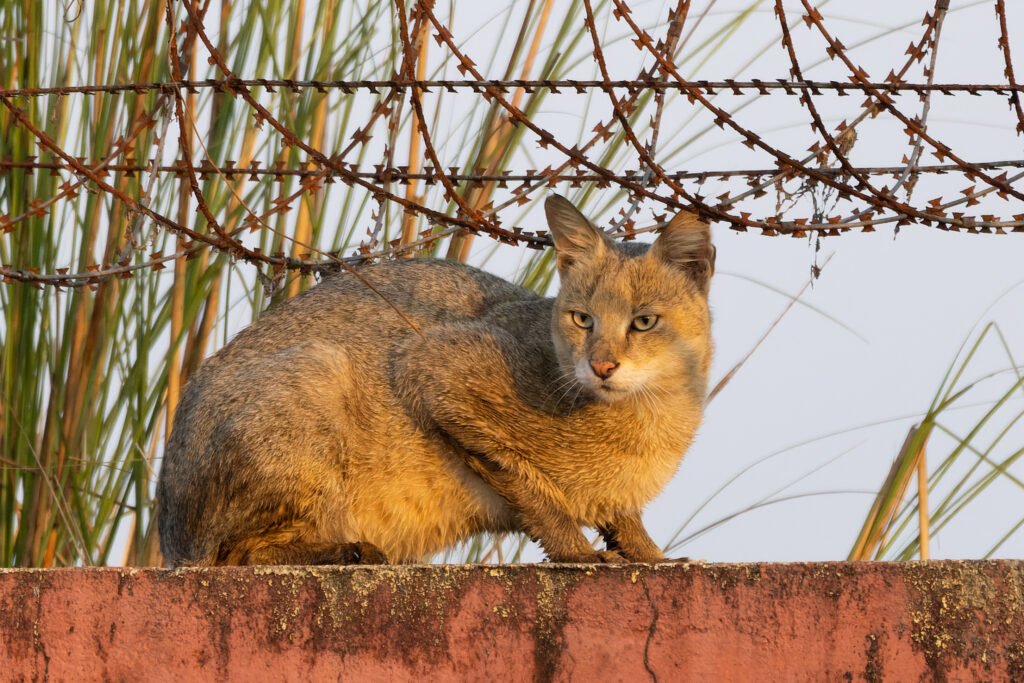
Jungle cats aren’t as flashy as leopards, but their sandy coats and tall ears make them stand out. Found from Egypt to India, they’ve taken to living in rice fields and irrigation ditches, where mice and birds are plentiful. The trouble is, these fields are full of people, tractors, and sometimes poison baits. Jungle cats help farmers by controlling pests, but their boldness can lead to run-ins with dogs or angry landowners. Their survival depends on balancing their wild instincts with the risks of a human-shaped landscape.
Rusty-Spotted Cats in Villages
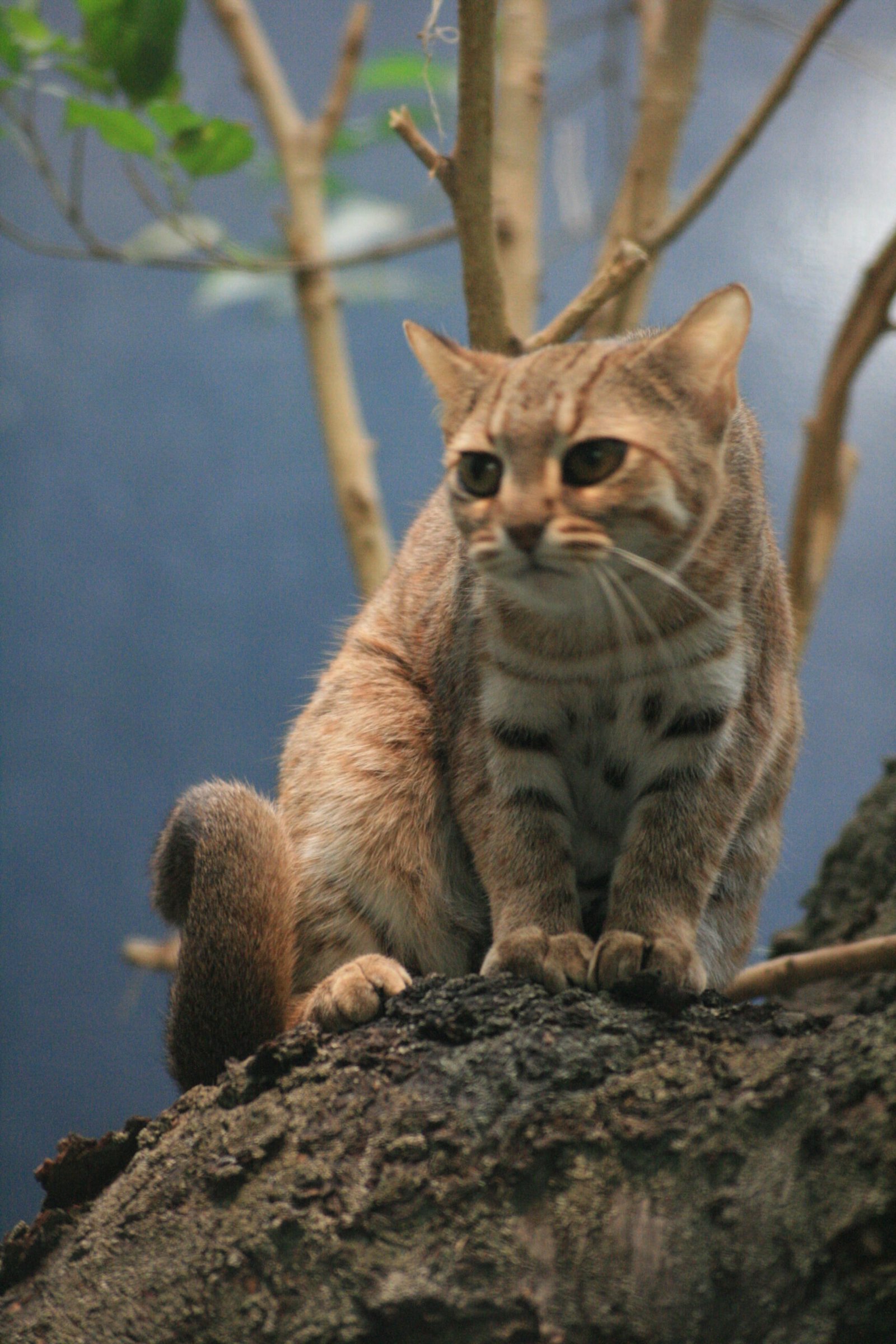
The rusty-spotted cat is one of the tiniest wild cats—about the size of a kitten! In India and Sri Lanka, they’re sometimes spotted darting through villages or hiding in barns. Their small size lets them slip through the smallest gaps, hunting insects and rodents at night. Though rarely seen, their boldness brings them close to humans, where they risk being caught as pests or killed by domestic animals. It’s amazing to think such a tiny wild cat braves the bright lights of village life.
Margays in Cocoa Plantations
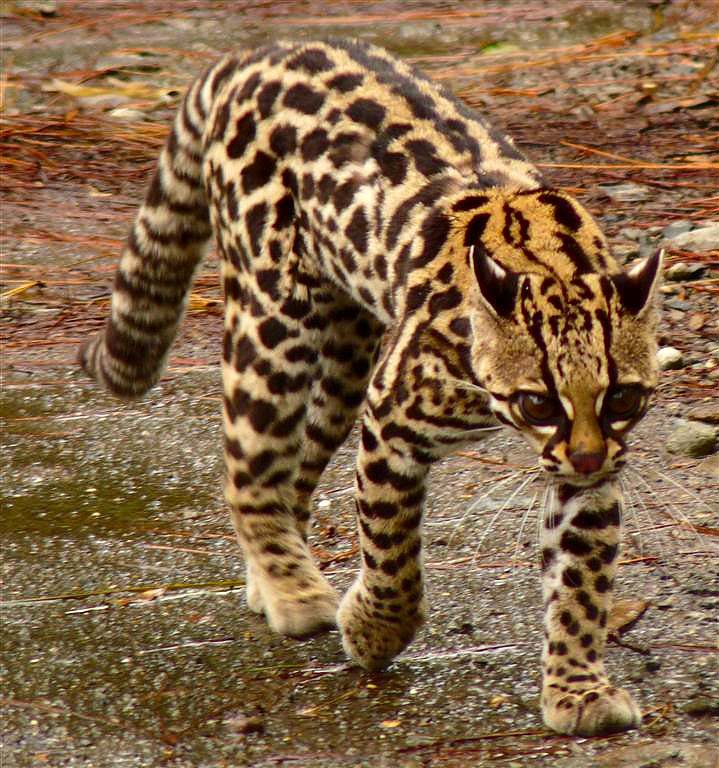
Margays are the gymnasts of the cat world, able to run headfirst down trees and leap from branch to branch. In Central and South America, as forests are cleared for cocoa and coffee, margays make their homes in plantations. They hunt at night and avoid people, but the loss of dense forests makes their acrobatic lifestyles riskier. Every time they cross a road or enter a farm, these cats face new dangers—but also new opportunities to show off their incredible skills.
Sand Cats in Desert Towns
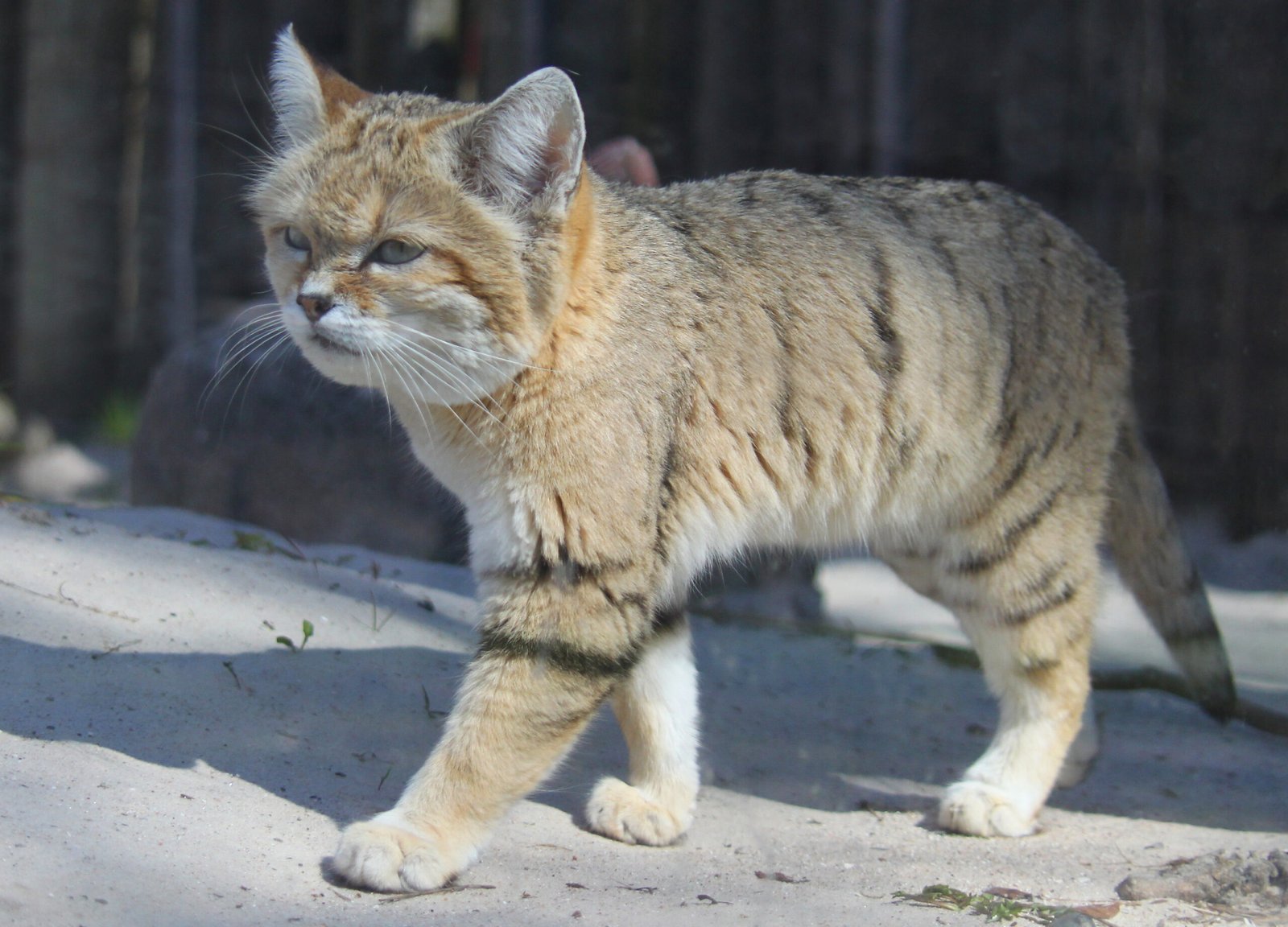
Sand cats are tiny, tough survivors of the hottest deserts in Africa and Asia. As human settlements pop up in the dunes, sand cats sometimes wander into villages in search of food or shade. Their camouflage makes them hard to spot, but they’re often at risk from cars, dogs, and traps. Sand cats are rarely aggressive, but their curiosity can land them in trouble. Their ability to survive on the edge of civilization shows just how resourceful wild cats can be.
Black-Footed Cats Near Farms
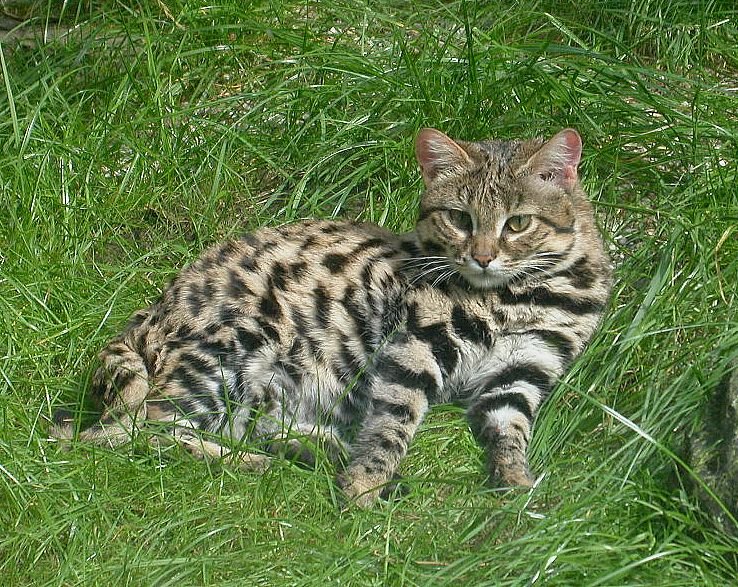
Black-footed cats are the smallest wild cats in Africa, and famously fierce for their size. These pint-sized predators often hunt rodents near farms and storage sheds, helping control pests for farmers. But getting too close to people is dangerous—poison baits and traps meant for rats can kill these tiny cats. Black-footed cats are mostly nocturnal and shy, but their boldness in seeking out new hunting grounds shows their bravery—and the risks that come with it.
Flat-Headed Cats in Oil Palm Estates
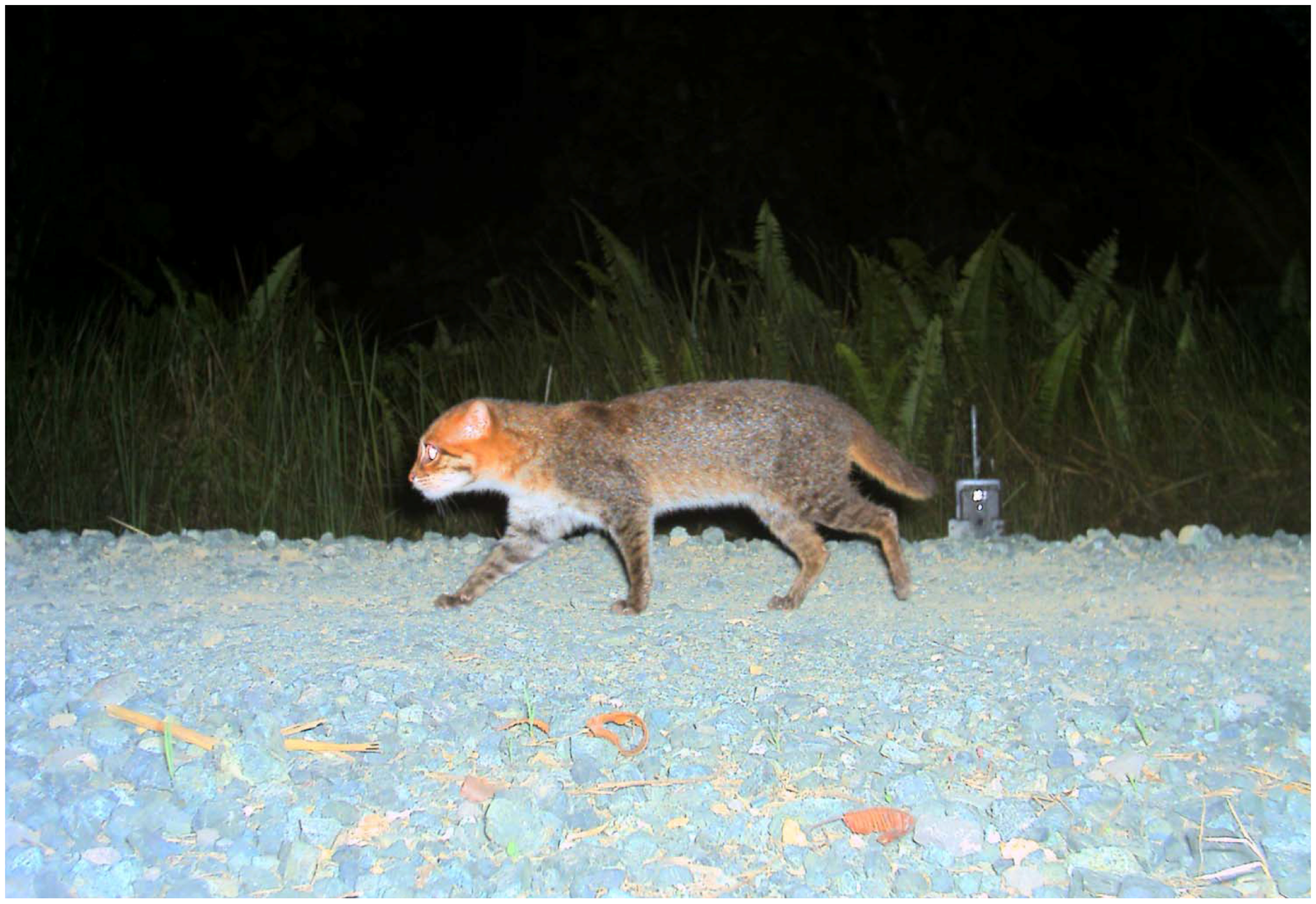
Flat-headed cats are among the rarest felines, found in the wetlands of Southeast Asia. As forests are replaced by oil palm plantations, these odd-looking cats sometimes venture into drainage ditches and farm canals. They hunt fish and frogs, but pollution and habitat loss make their lives precarious. Flat-headed cats are shy and elusive, but their presence in these new landscapes is a sign of both desperation and determination.
Pampas Cats in Wheat Fields

Pampas cats are little-known but widespread across South America’s grasslands and farmlands. With their bushy tails and striped legs, they often stalk mice and birds in wheat and soybean fields. Farmers sometimes mistake them for pests, leading to unnecessary persecution. Pampas cats avoid people but can’t resist easy meals, making their journeys outside protected areas both tempting and treacherous.
Geoffroy’s Cats Near Human Settlements

Geoffroy’s cats, with their beautiful spotted coats and short stature, are common across the southern cone of South America. As villages and farms expand, these cats are often seen at the edges of settlements, hunting rodents and small birds. Their adaptability is impressive, but so is their vulnerability—cars, dogs, and poison can turn a night’s hunt into disaster. Geoffroy’s cats teach us that even the most adaptable wild animals face tough choices when wild spaces shrink.
Bay Cats Skirting Forest Edges
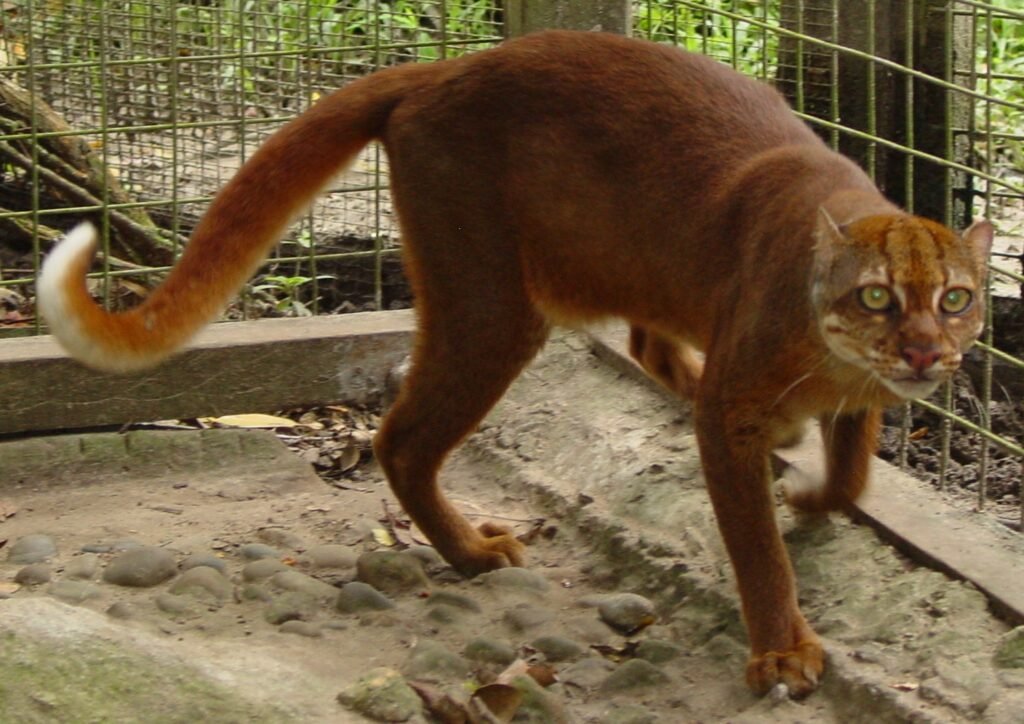
Bay cats are some of the world’s rarest and most mysterious wild cats, living only on the island of Borneo. As logging and plantations eat away at the rainforest, bay cats are forced to hunt along forest edges and near villages. Almost nothing is known about these elusive cats, but every sighting outside protected areas is a reminder of how much is at stake. The risks are huge, but so is the hope that these cats can inspire new efforts to protect their shrinking world.
Andean Cats in Mining Zones
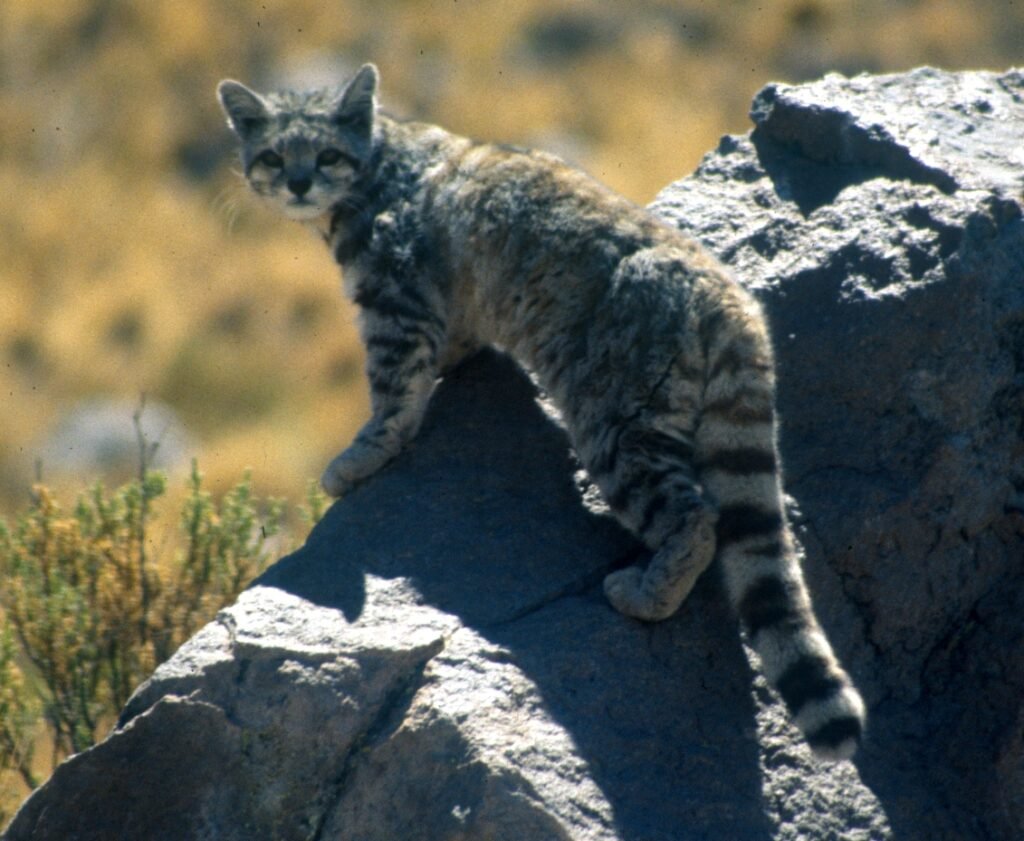
Andean cats, with their thick fur and banded tails, haunt the high mountains of South America. As mining operations expand, these rare cats find themselves navigating roads, camps, and machinery. Their journey outside protected reserves exposes them to many dangers, from vehicles to pollution. Andean cats are so elusive that even locals consider them a legend, but their need to cross risky landscapes is very real—and a powerful symbol of the challenges facing big cats everywhere.
Which of these wild felines would you be most thrilled—or startled—to find outside your window?

Suhail Ahmed is a passionate digital professional and nature enthusiast with over 8 years of experience in content strategy, SEO, web development, and digital operations. Alongside his freelance journey, Suhail actively contributes to nature and wildlife platforms like Feline Fam, where he channels his curiosity for the Feline into engaging, educational storytelling.
With a strong background in managing digital ecosystems — from ecommerce stores and WordPress websites to social media and automation — Suhail merges technical precision with creative insight. His content reflects a rare balance: SEO-friendly yet deeply human, data-informed yet emotionally resonant.
Driven by a love for discovery and storytelling, Suhail believes in using digital platforms to amplify causes that matter — especially those protecting Earth’s biodiversity and inspiring sustainable living. Whether he’s managing online projects or crafting wildlife content, his goal remains the same: to inform, inspire, and leave a positive digital footprint.






